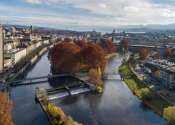Instacart CEO says online grocery shopping has room to grow
When the pandemic hit the U.S. last year, grocery delivery company Instacart suddenly became a lifeline for millions of consumers. Sales volumes skyrocketed; in one month, the company added 300,000 drivers to keep up with ...
Oct 11, 2021
0
20









